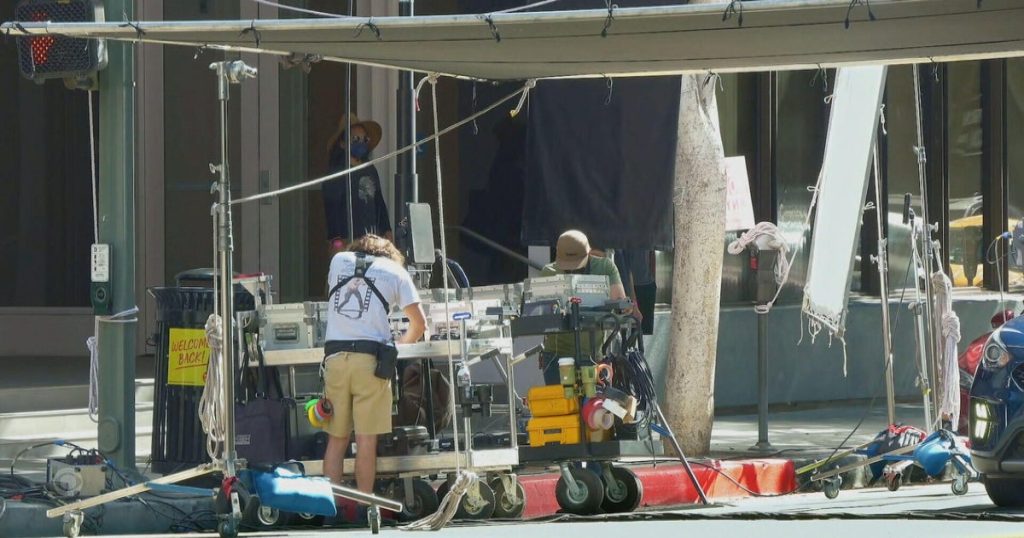In recent years, the film and television industry in Los Angeles has encountered a significant downturn. Following prolonged strikes by writers and actors in 2023, the production landscape has drastically changed, leading to substantial job losses and reduced film activity in the region. Key players in Hollywood are grappling with the urgent need for revitalization, while state officials propose measures aimed at reversing the current decline.
| Article Subheadings |
|---|
| 1) Impact of Strikes on Film Industry |
| 2) Declining Production Numbers |
| 3) Competition from Other States and Countries |
| 4) Government Response and Challenges |
| 5) The Personal Toll on Creatives |
Impact of Strikes on Film Industry
In 2023, a series of strikes by Hollywood writers and actors brought the industry to a standstill. These strikes were the culmination of long-standing disputes over wages, working conditions, and the use of artificial intelligence in creative processes. According to reports, this disruption resulted in approximately 40,000 lost jobs in California’s film and television sector alone. Phil Mangano, a seasoned film and television editor, noted, “It was just job after job after job… Very consistent work.” The abrupt halt in production has forced many professionals to reevaluate their career trajectories and seek alternative employment opportunities.
Declining Production Numbers
The decline in television production in the Los Angeles area has been stark. Data from the nonprofit organization FilmLA indicates that production levels have plummeted by an alarming 58% since their peak in 2021. From 18,560 shoot days for television shows in 2021, the number has dwindled to just 7,716 in 2024. Furthermore, the situation continued to worsen during the beginning of 2025, with a reported 22.4% decline in on-location productions compared to the same period the previous year.
Competition from Other States and Countries
As Hollywood grapples with its crisis, many productions have shifted their focus to other states and countries offering attractive tax incentives. According to industry experts, some European nations provide tax rebates as high as 40%, making them highly competitive alternatives for filmmakers. Matthew Belloni, a respected industry analyst, pointed out, “Right now, it’s a triage situation. The patient is dying, and you need to bring it back to life.” The allure of these incentives has made it more difficult for California to retain its film industry, resulting in a significant loss of jobs for local talent.
Government Response and Challenges
In an effort to address the decline, California Governor Gavin Newsom announced a proposal to significantly boost the state’s film and TV tax credits, increasing the funding from $330 million to $750 million annually. He described the film industry as being “on life support” and emphasized that both Los Angeles County and the city face serious challenges. However, industry observers are skeptical about whether this measure may be too little, too late. Belloni frantically noted that the state has not effectively addressed these issues for over 30 years, leading to ongoing concerns about California’s ability to compete in the evolving landscape.
The Personal Toll on Creatives
The repercussions of the industry downturn extend beyond mere statistics; they affect thousands of individuals and families. With his savings dwindling, Phil Mangano shared his struggles in finding work post-strikes. “I applied for a job at Costco a couple of months ago,” he revealed, showcasing the hard reality for many Hollywood professionals. This job was a stark contrast to his former employment in film editing, where he enjoyed a steady income. Mangano’s situation exemplifies the broader struggle faced by those in the industry, as they confront the possibility of losing their homes and livelihoods.
| No. | Key Points |
|---|---|
| 1 | Hollywood experienced a significant downturn due to strikes by writers and actors, impacting around 40,000 jobs. |
| 2 | Television production in the greater Los Angeles area decreased by 58% since its peak in 2021. |
| 3 | Other states and countries offering tax incentives are competing aggressively with California, leading to job losses. |
| 4 | Governor Gavin Newsom proposed increasing California’s film and TV tax credits to mitigate job losses. |
| 5 | The film industry’s decline has put significant financial pressure on individuals like Phil Mangano, forcing them to seek alternative employment. |
Summary
The ongoing crisis within the Los Angeles film and television sector highlights the urgent need for reform and adaptation. With productions declining sharply and creative professionals facing severe financial distress, both industry stakeholders and government officials must engage in proactive discussions to restore the vibrant landscape that once defined Hollywood. Whether recent efforts to increase tax credits will be sufficient remains to be seen, but it is clear that immediate action is necessary to halt the ongoing exodus of production jobs.
Frequently Asked Questions
Question: What caused the job losses in Hollywood?
The significant job losses in Hollywood were primarily due to prolonged strikes by writers and actors in 2023, which halted production across the industry.
Question: How much has television production in Los Angeles decreased?
Television production in the greater Los Angeles area has decreased by 58% since its peak in 2021, translating to a dramatic drop in on-location shoot days.
Question: What measures is the California government taking to address the decline?
California Governor Gavin Newsom has proposed increasing the state’s film and TV tax credits from $330 million to $750 million annually to revitalize the industry and retain jobs.


